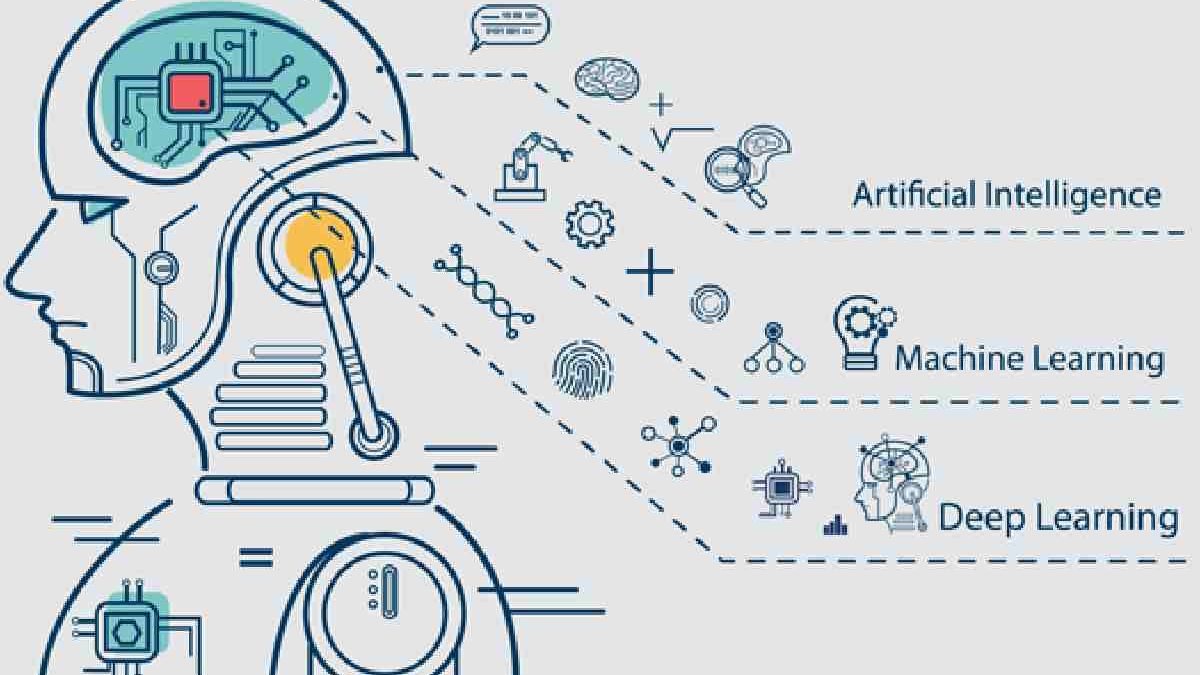Artificial Intelligence (AI) is all about! It’s a part of computer science where people build machines that act smart, doing things that usually need a human brain, like figuring out math problems or spotting faces in photos. Thanks to cool tricks like machine learning and deep learning, AI is popping up everywhere in the tech world, from phones to cars. Let’s break it down like a fun game level, so you can see how AI works, why it’s awesome, and what it means for places like Saudi Arabia and beyond!
Table of Contents
How Does AI Work?
AI might sound like a big, tricky idea, but it’s just about making computers act clever. Think of it like training a puppy – you teach it tricks, and it gets better with practice. AI has two main parts: thinking (like learning or solving problems) and doing (like acting on what it learns).
Some AI uses simple rules, like “if this, then that,” while others learn on their own by studying tons of info, thanks to machine learning. There are different kinds of AI, and each works a bit differently, so let’s check out the main types to see what makes them special!
Types of AI: From Simple Helpers to Sci-Fi Dreams
- Narrow AI (Simple AI) This is the easy-peasy AI that does one job really well, like a superhero with one power. Examples? Google’s search engine, photo apps that know who’s in a picture, or voice helpers like Siri or Alexa. Even self-driving cars use this! Machine learning feeds them data (like pictures or words) to get smarter, and deep learning uses brain-like networks to dig deeper, connecting dots for top-notch results. It’s like teaching a robot to spot cats in photos by showing it thousands of kitty pics!
- General AI (Super Smart AI) This is the stuff from movies, where AI acts like a human, solving all kinds of problems with full-on brainpower. Think of a robot that can learn anything, like you do in school or at home. But here’s the catch – building this kind of AI is super hard, and we’re not there yet. Scientists are still figuring out how to make machines that think and act in any situation, just like you!
A Quick History of AI: From Old Ideas to New Tricks
AI’s story goes way back to ancient Greece, where a thinker named Aristotle came up with logic rules – like the first baby steps of smart thinking. But the AI we know today started about 80 years ago. In 1943, two guys, Warren McCullough and Walter Pitts, wrote about building a math model to mimic a brain’s network. In 1949, Donald Hebb said our brains get stronger with practice, inspiring AI ideas. Then, in 1950, Alan Turing (a super-smart math guy) wrote a paper asking, “Can machines think?” He made the Turing Test, a way to check if a computer acts human. That year, some students built the first brain-like computer, and others started coding chess games. A sci-fi writer, Isaac Asimov, also set rules for robots to be safe and helpful. Cool, right?
When Did AI Really Kick Off?
AI’s big start was in 1950 with Turing’s paper. His question, “Can computers think?” sparked the whole field. The Turing Test became a goalpost – if a machine tricks a human into thinking it’s a person, it’s super smart! Since then, AI’s grown like a plant in fast-forward, powering phones, cars, and more.
Why AI is Awesome?
AI’s like a trusty sidekick, making life easier and safer. Here’s why it rocks:
- Fewer Mistakes: If coded right, AI messes up less than humans, like a calculator that never flubs math.
- Tough Jobs: AI can work in dangerous places, like handling yucky chemicals or exploring space, keeping people safe.
- No Boredom: Dull tasks like sorting papers don’t bug AI – it just keeps going!
- Helpful Pal: AI guesses what you need, like suggesting songs or directions on your phone.
- Fraud Fighter: It spots sneaky tricks on credit cards, keeping money safe.
- Paper Boss: AI organizes files fast, like a super librarian.
- Lonely Buster: Robot pets or chatbots cheer people up.
- Smart Choices: AI makes clear, fair decisions without getting grumpy.
- Doctor Helper: It practices surgery with crazy precision, better than humans.
- Non-Stop Worker: AI doesn’t need naps, so it works all day and night!
The Not-So-Great Parts of AI (It’s Not Perfect)
Even superheroes have flaws, and AI’s got some too:
- Pricey to Build: Making and fixing AI costs a lot, like buying a fancy gaming setup.
- Big Questions: Some worry about robots acting too human – it’s a bit spooky and needs careful thinking.
- Not Always Better: AI might not understand feelings like humans do, so it’s tricky in situations needing heart.
- Stuck in Rules: AI can’t think outside its code, so it’s not super flexible.
Wrapping It Up: AI’s Your Future Friend!
AI’s like a magic toolbox, changing how we work, play, and live in places like Saudi Arabia and all over the world. From helping doctors save lives to powering self-driving cars, it’s making things faster, safer, and more fun. But it needs careful planning to avoid oopsies and keep costs low. Whether you’re dreaming of coding games or exploring new tech, AI’s a big part of tomorrow’s adventures. So, get curious – maybe you’ll invent the next cool AI trick!

